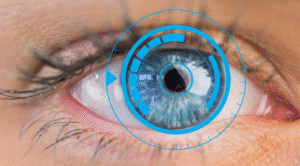Language is critical to the success of polygraph tests.
All questions posed during lie detector tests are verbally expressed. Examinees are equally expected to respond verbally to the queries, although their nonverbal cues may offer useful hints of anxiety.
Therefore, language proficiency is a critical consideration when choosing a polygraph examiner. To conduct accurate evaluations, the polygrapher must be well-versed in the respondent’s native language, including any cultural nuances that may impact the tests’ accuracy.
This post explores the impact of the language barrier on the accuracy of polygraph exams.
Dangers of Conducting Polygraphs in Non-native Languages
The potential for communication breakdown is perhaps the biggest issue with administering a polygraph test in a non-native language.
It’s imperative for polygraph examinees to relax throughout the test duration. Unfortunately, the respondent may become anxious as they struggle to comprehend questions in a non-native language.
Intense anxiety might activate the autonomic nervous system (ANS) and trigger physiological responses that don’t necessarily indicate deception.
Other risks of administering lie detector tests in a non-native language include the following:
1. Misunderstanding of Cultural Nuances
Each language and culture attaches specific meanings to certain words and nonverbal cues. These nuances are particularly noticeable when referencing taboo words like death and sex.
A lack of understanding of these cultural nuances can cause a polygrapher to make the wrong deductions, leading to inaccurate tests.
2. Examiner Bias
Unprofessional polygraphers can be disposed to bias based on an examinee’s language and cultural background. A case in point is where a respondent, a prime suspect in a murder investigation, happens to hail from a crime-ridden country.
Such biases may affect a polygrapher’s perception of the examinee and cause them to draw inaccurate deductions.
3. Cognitive Load
Some findings suggest that greater cognitive effort is required to lie in a non-native language.
Increased cognitive load may trigger physiological responses that some inexperienced examiners could misconstrue as signs of deception.

The Role of Interpreters in Polygraph Tests
Engaging a competent interpreter can help relay polygraph questions to the examinee, minimizing the language barrier.
Conversely, an incompetent interpreter can complicate a polygraph test by missing significant nuances in each question. This is common where the interpreter is a non-native speaker of the examinee’s language.
The thumb rule is to have lie detector tests administered by examiners from the same native tongue as the examinee. It minimizes communication breakdown while ensuring all language subtleties are accurately conveyed to the respondent.
If you must work with an interpreter, seek out individuals who are impeccably proficient in both the examiner’s and examinee’s languages. It’s better if both the interpreter and respondent are native speakers of the same language.
Other considerations are mentioned in the rundown:
- Impartiality – The interpreter must not be personally acquainted with either the examiner or examinee.
- Availability – The interpreter must be physically present in the interview room rather than rendering their services virtually.
- Industry Experience – If possible, go for an interpreter who’s vastly experienced in polygraph administration.
Case Studies on the Impact of Language on Polygraph Accuracy
Numerous findings have shown that administering polygraphs in a non-native language can significantly impact the test’s accuracy.
In one such case study, examiners yielded more accurate findings when interviewing native-language speakers.
Researchers also observed that, while the language barrier may not have an effect on discrimination, it does impact bias.
The Thin Line Between Language Barrier and Accurate Polygraph Tests
While deception is easier to detect in a native language than a non-native language, some research suggests that lying requires more cognitive load than truth-telling. The implication is that deceivers can beat the polygraph tests irrespective of language.
Several factors can make a deceptive examinee pass a polygraph test, including inexperienced examiners and the use of countermeasures. Others include:
1. Question Technique
Polygraph tests should follow specific question designs. Typically, the questions fall into three categories: Relevant, Irrelevant, and Control.
Standard tests include more relevant questions, a few control questions, and minimal irrelevant questions.
2. Examinee’s Mental and Physical State
A lie detector examinee should be in their best shape.
Certain underlying conditions can impact the test’s accuracy, especially in the absence of pre-established baselines.
3. Inadequate Preparation
Poor planning will most certainly lead to inaccurate or inconclusive polygraph tests.
To prepare for a lie detector test, the examinee should be made aware of the forthcoming evaluation, and they must willfully consent to being tested.

Enhancing Polygraph Accuracy Through Proper Language Selection
Multiple studies have demonstrated that administering polygraph exams to an examinee in their non-native language can impact the tests’ accuracy, even where interpreters are present. That’s due to the potential for communication breakdown and the inability to properly relay cultural nuances.
However, some findings also suggest that it’s easier to catch people in a lie in their native language.
A good practice is to schedule all tests in the respondent’s native language. More importantly, the evaluations must be conducted by duly trained examiners.






